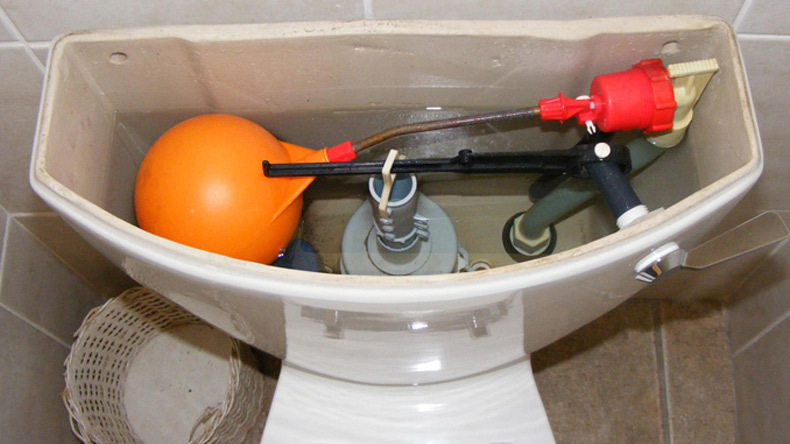Is your toilet flushing way too slowly, or not clearing properly? A slow flushing toilet needs to be attended to as ignoring the problem can lead to the toilet becoming completely clogged, which is not something you want to happen.
If you are having problems with a slow flushing toilet there are three main things you need to look at, the toilet tank water level, the water inlet and potential blockages. Chances are that by examining each of these you will be able to identify the problem and solve it.
Ensuring the toilet tank water level is correct
It may be tempting to have less water in the toilet tank from an economic and water saving point of view, but not having enough water in the tank can start to cause problems with flushing. If you lift the lid on your toilet tank you should be able to identify whether or not you need to raise the water level.
When you look inside you should be able to see a tube running vertically in the centre of the tank. This is part of the toilet flush valve. Attached to it you should be able to see the toilet fill tube and the toilet flapper. Identifying this vertical tube is vital as the water level in the tank should be at approximately half an inch below the top of this tube. Sometimes you will find an indicator on the side of the inside of the tank to help you ascertain the exact correct level.

If you identify that the water level is too low it’s relatively easy to solve the problem. At the side of the toilet bowl you will find either a fill valve or a ballcock. A fill valve toilet has a cylindrical float that surrounds a cylinder, whereas a ballcock toilet has a ball float on the end of an arm. Either of these can be adjusted to either raise of lower the level of water in the tank. If you want to raise the water level you just have to locate and loosen the retaining clips or screws so that you can raise the fill valve or ballcock.
Once you have made the adjustments you need to flush the toilet a couple of times to ensure that the water level is correct and that it doesn’t raise too high and trickle into the fill tube; this just wastes water.
Checking for sediment in water inlets
If there is no problem with the level of water in your toilet tank you should check the inlet built into your toilet bowl that takes the water from the tank to the toilet. Over time sediment can build up in this inlet and reduce the flushing efficiency of your toilet, as it impairs the flow of water. It’s a good idea to put on a pair of waterproof gloves and give the water inlet a good clean to get rid of any sediment.
Dealing with blockages
If the problem is not with the toilet tank or the water inlet it’s likely that there is a blockage somewhere that is adversely affecting the flushing potential of your toilet. You can try using a plunger to remove the blockage and restore your normal flushing power. If you don’t have a plunger then one tip is to use a mop, coat hanger or similar object with a plastic bag secured tightly over the end; this has the same effect as a plunger.

Sometimes an item has been inadvertently flushed down the toilet and is hard to budge; this is when you may need to use a toilet auger. This tool consists of a flexible cable which you feed down the drain using a hand crank. The cable is sturdy at its head which means that it can dislodge whatever obstruction is causing the problem. Once it does this you should find that power returns to your toilet flush.








